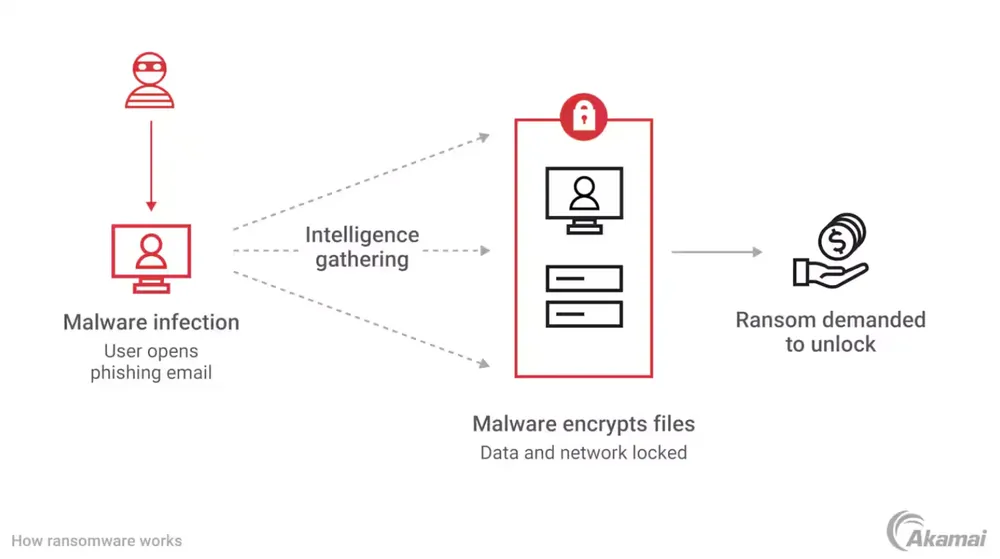Published
- 9 min read
Your Cloud Won't Be Encrypted, It Will Be Deleted: Surviving Cloud Ransomware

For years, the image of ransomware has been a red skull on a locked Windows desktop. The playbook was predictable: attackers breach the network perimeter, move laterally, and encrypt servers and laptops, grinding business to a halt. We built our defenses for this scenario—endpoint protection, network segmentation, and Windows-centric backups.
That era is over. And that playbook is dangerously obsolete.
The new generation of cloud ransomware is here, and it is a fundamentally different and more terrifying beast. These attackers aren’t interested in the tedious work of encrypting hundreds of virtual machines one by one. Their goal is far more devastating. They are targeting the cloud control plane itself. They won’t just lock your data; they will delete your backups, dismantle your infrastructure, and wipe your entire cloud environment from existence.
This is not a theoretical threat; it’s happening now. For CISOs and security leaders, the time has come to throw out the old ransomware playbook. Your cloud is the new battleground, and you need a new, cloud-native defense strategy to survive.

The Paradigm Shift: Why Cloud Ransomware is a Different Beast
To defend against this threat, you must first understand why it is so different. Traditional ransomware was an attack on your compute. Cloud ransomware is an attack on your entire cloud architecture.
The Old Way: Encrypt the files on a server’s hard drive.
The New Way: Use a single, compromised IAM key to script the deletion of every snapshot in your account, then encrypt your “crown jewel” S3 buckets with an attacker-controlled KMS key, and finally, delete the original data.
As the experts at Vectra AI point out, this is a direct attack on availability, using the cloud’s own powerful services against you. Attackers are no longer just a demolition crew with a sledgehammer; they are a rogue architect with the master blueprints and the keys to the bulldozer.
The Anatomy of a Cloud Catastrophe: The Modern Kill Chain
While the specifics vary between cloud providers, the cloud ransomware kill chain follows a predictable and terrifying pattern.
- The Compromised Credential
The attack almost never starts with a network exploit. It starts with an identity. As research from Wiz consistently shows, the initial entry point is almost always a compromised credential:
- A service account key accidentally leaked in a public GitHub repository.
- A developer’s personal access token stolen by info-stealer malware.
- A misconfigured public asset (like an exposed server or storage bucket) that provides an entry point to steal instance metadata credentials.
- The IAM Pivot
Once inside, the attacker’s first goal is to escalate their privileges. They are not looking for domain admin; they are looking for powerful cloud IAM permissions. They will use their initial access to query IAM policies, looking for a path to a role with permissions like:
iam.serviceAccountKeys.createiam.roles.updateresourcemanager.projects.setIamPolicyA single misconfigured IAM policy can allow an attacker to pivot from a low-privilege, read-only role to the equivalent of a cloud “god mode.”
- The Attack on Availability
With high-level privileges secured, the attacker executes the final, devastating phase. This is a coordinated, API-driven assault:
- Backup Destruction: The first target is always your backups. The attacker will use their privileged access to script the deletion of every snapshot, every backup vault, and every versioned object in your storage buckets.
- Data Entrapment: They will then target your most critical data stores (e.g., Google Cloud Storage buckets, Amazon S3, Azure Blob Storage). Instead of slowly exfiltrating and encrypting the data, they will use a far faster method: they will use the cloud’s own Key Management Service (KMS) to re-encrypt your data with an attacker-controlled key and then delete the original encryption key. Your data is now cryptographically locked, held hostage by the attacker’s key.
- Infrastructure Demolition (The Final Blow): For maximum impact, the attacker may then use their access to systematically tear down your infrastructure—deleting VMs, Kubernetes clusters, and VPCs.
The ransom note arrives. But this time, it’s not a demand for a key to unlock your files. It’s a demand for a key to unlock your data before they delete it forever.
The CISO’s Defense Blueprint: A Cloud-Native, Defense-in-Depth Strategy
Defending against this requires a complete rethinking of our traditional ransomware defenses. The Google Cloud architecture for mitigating ransomware provides an excellent, structured framework based on the principle of defense-in-depth. Here is a practical blueprint.
Harden Your Identities (The New Perimeter)
The attack starts with a compromised identity, so your defense must start here.
- Eliminate Static Keys: The single most important step you can take is to aggressively eliminate long-lived, static credentials like service account keys. Use Workload Identity Federation to allow your CI/CD pipelines and other workloads to authenticate to GCP using short-lived, dynamic tokens.
- Enforce Least Privilege: Do not use primitive roles like Owner or Editor for service accounts. Create granular, custom IAM roles that grant only the permissions necessary for a task. Use tools like the IAM Recommender to proactively identify and remove excessive permissions.
- Use IAM Deny Policies: Create unbreakable guardrails that explicitly forbid high-risk permissions (like deleting backups or modifying retention policies) for all but a handful of highly-secured, break-glass accounts.
Protect Your Data with Immutability
You must assume your primary data stores could be compromised. Your backups are your last line of defense, and they must be untouchable.
- Leverage Immutable Storage: Use Google Cloud Storage Object Lock in “Compliance Mode” to make your critical backup data immutable for a defined retention period. In this mode, no one—not even a root user or your own Global Admin—can delete or modify the data until the lock expires.
- Isolate Your Backups: Store your critical backups in a separate, dedicated GCP project with highly restricted IAM permissions. The service accounts that have write access to this project should not exist anywhere else, and the human users with access should be extremely limited.
Secure Your Infrastructure and Network
Prevent attackers from gaining their initial foothold and limit their ability to move laterally.
- Eliminate Public Exposure: Use tools like Security Command Center to continuously scan for and eliminate unnecessary public exposure of VMs, storage buckets, and databases.
- Implement Micro-Segmentation: Use VPC Service Controls to create a “digital fence” around your most critical projects. This can prevent a compromised workload in one project from accessing or exfiltrating data from another, even if the attacker has stolen valid credentials.
Detect and Respond at Cloud Speed
You need to be able to detect the attacker’s activity before they reach the final, destructive phase.
- Move Beyond Your SIEM: A traditional SIEM is too slow and lacks the context to detect a sophisticated cloud attack in real-time. You need a cloud-native threat detection solution like Chronicle Security Operations.
- Monitor for High-Risk API Calls: Your highest-priority alerts should not be for malware signatures. They should be for anomalous, high-impact API calls, such as:
iam.serviceAccounts.setIamPolicystorage.buckets.deletecompute.snapshots.delete- Any modification of your GCS Object Lock or backup policies.
- Automate Your Response: Your response to a critical cloud alert cannot be to create a ticket. You need a SOAR playbook that can automatically respond at machine speed—revoking IAM permissions, isolating a workload with a firewall rule, or disabling a compromised service account within seconds of detection.
Conclusion: This is Not Your Father’s Ransomware
Cloud ransomware is not an evolution; it is a revolution. It has transformed the attack from a noisy, disruptive event into a silent, surgical, and potentially business-ending catastrophe. The old playbook of endpoint protection and Windows backups is utterly insufficient to defend against an attacker who has compromised your cloud control plane.
The new defense is built on a foundation of Zero Trust and cloud-native principles. It’s a strategy that prioritizes identity security above all else, renders your most critical backups immutable, and leverages the power of automation to detect and respond at the speed of the cloud. The game has changed. It’s time for your playbook to change with it.
To further enhance your cloud security and implement Zero Trust, contact me on LinkedIn Profile or [email protected].
Frequently Asked Questions (FAQ)
How is cloud ransomware different from traditional ransomware?
Traditional ransomware focuses on encrypting files on individual servers and endpoints. Cloud ransomware targets the cloud control plane itself, aiming to encrypt or destroy entire data stores like S3 buckets, delete backups and snapshots, and even dismantle your cloud infrastructure using the cloud's own APIs.
Can my backups protect me from cloud ransomware?
Only if they are configured correctly. A key part of the modern cloud ransomware attack is to delete your backups first. To be effective, your backups must be stored in a separate, isolated account or project and be made immutable using features like GCS Object Lock, which prevents deletion even by an administrator.
Is MFA a good defense against cloud ransomware?
MFA is a critical defense against the initial compromise of human user accounts. However, it does not protect against the compromise of a service account key or an OAuth token, which are the most common entry points for cloud ransomware attacks.
What is the single most effective control to prevent cloud ransomware?
While a layered defense is essential, the single most impactful control is hardening your IAM posture. This means aggressively eliminating long-lived static credentials like service account keys, enforcing the principle of least privilege, and strictly controlling who can modify IAM policies.
My cloud environment is complex. Where do I even start?
Start with visibility. Use a modern cloud security tool like a CNAPP to get a complete inventory of all your cloud assets, identities, and their permissions. The first priority is to find and fix your most critical risks: publicly exposed assets with sensitive data and overly permissive identities.
Relevant Resource List
- Wiz Academy: “Cloud Ransomware: A Threat on the Rise”
- Akamai: “What is Ransomware?”
- Google Cloud Architecture Center: “Mitigating ransomware attacks in Google Cloud”
- Vectra AI: “Cloud-Native Ransomware: How Attacks on Availability Leverage Cloud Services”
- CISA: “Stop Ransomware” Initiative and Guidance
